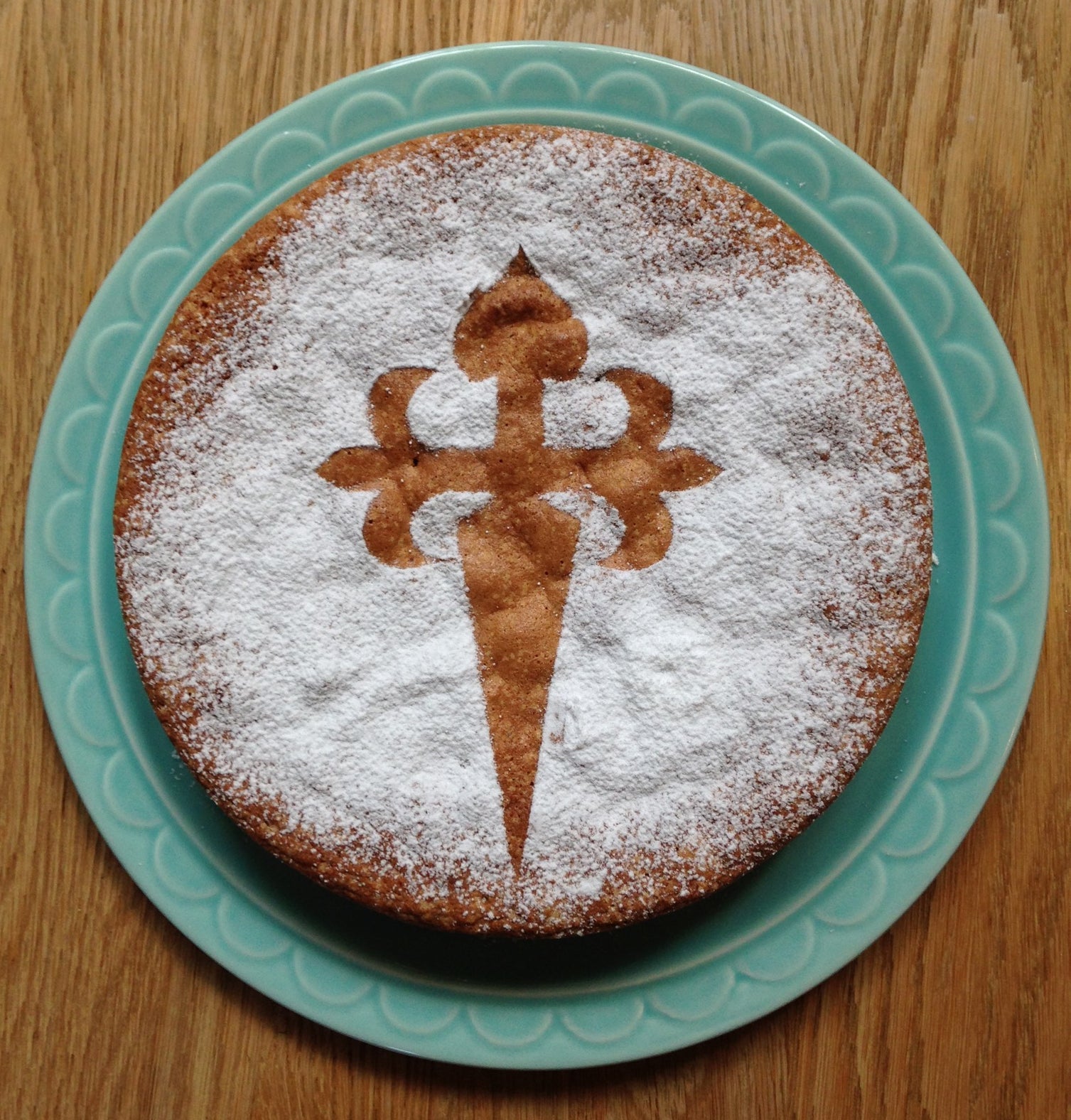 This festive trifle is a true show-stopper and, unlike other trifles it does not go all squishy in the middle when the sponge gets too wet. The even better news is that the recipe is gluten free! The sponge, jelly and custard can be prepared the day before needed but I recommend assembling the trifle on the day of your celebrations. It will feed around 15 very hungry friends and whanau.
This festive trifle is a true show-stopper and, unlike other trifles it does not go all squishy in the middle when the sponge gets too wet. The even better news is that the recipe is gluten free! The sponge, jelly and custard can be prepared the day before needed but I recommend assembling the trifle on the day of your celebrations. It will feed around 15 very hungry friends and whanau.
Step 1: Make the Sponge
1 cup caster sugar
2 tablespoons water
4 eggs, separated
½ teaspoon vanilla
1 ½ cups cornflour
1 teaspoon (GF) baking powder
½ teaspoon salt
Preheat oven to 180°C. Spray 2 shallow 23 cm sponge tins with baking spray and line the bases with baking paper then spray the paper too. Note, it is important to use proper shallow sandwich or sponge tins as the cake won’t rise properly in a spring form or deeper tin.
Place sugar and water in a microwave bowl or small saucepan and bring to the boil. The sugar does not have to dissolve completely.
Beat the egg whites until stiff, then slowly with the mixer running, dribble in the hot sugar and water solution. Beat really hard. Add the egg yolks and vanilla then carefully fold in the sifted dry ingredients. Be very gentle with the folding process. Carefully pour into the prepared tins and bake for 18 – 20 minutes. As soon as you remove the sponges from the oven, drop the tins from knee height square on the floor – this tactic works to that “shock” the cakes and stopping the sponges from deflating. Cool for two minutes in the tins then turn out onto a wire rack and carefully peel off the paper and cool.
You will only need one of the sponge cakes for the trifle so pop the other sponge in the freezer and save for another trifle-worthy celebration!
This sponge recipe is by Jo Seager.
Step 2: Make The Jelly
2 tablespoons (28g) powdered gelatine
1 litre blackcurrant and apple juice
2 ½ cups frozen raspberries
PLUS 3 punnets of fresh raspberries (to be used when assembling the trifle)
To make the jelly, combine gelatine and 250ml (1 cup) blackcurrant and apple juice in a large bowl and stir to combine. Set aside.
Place remaining blackcurrant and apple juice in a medium saucepan and bring to the boil over high heat. Pour over the gelatine mixture and whisk to dissolve all the gelatine. Set aside to cool slightly.
Pour into the base of a 24-26cm wide glass trifle dish. Scatter over the frozen raspberries and refrigerate to set.
Step 3: Make the Custard
2 cups cream
1 teaspoon vanilla bean extract
½ cup caster sugar
1 tablespoon cornflour
6 egg yolks, at room temperature
500g marscapone
To make the custard, place cream and vanilla in a small saucepan over medium-high heat until almost boiling.
Place egg yolks, sugar and cornflour in a small bowl and whisk to combine. Gradually whisk the hot cream into the egg mixture until combined.
Return the cream mixture to the saucepan, reduce heat to low, stirring until well combined and the custard is thick. Remove from the heat, pour into a large bowl, cover with plastic wrap and refrigerate until cold. Prior to assembling the trifle fold the marscapone through the custard to combine. (You can do this the day before)
Step 4: Assembling the trifle
Spoon half the custard over the set jelly. Top with your sponge-I put the whole sponge into the glass dish rather than cutting it up so it makes a lovely golden crumb layer in the trifle. Arrange the 3 punnets of raspberries on top of the sponge and try to keep the raspberries near the glass upright so they create a lovely pink stripe in the bowl. Top the raspberries with the remaining custard and refrigerate.
Step 5: Making the Italian Meringue
3 egg whites at room temperature
1 1/4 cups caster sugar
90ml water
1 teaspoon cream of tartar
To make the meringue, place the water, cream of tartar and half the sugar in a medium saucepan over medium-high heat. Bring to the boil and cook for 6 minutes, or until it reaches 115° on a sugar thermometer.
Meanwhile, place the egg whites in the bowl of an electric mixer and whisk on high until stiff peaks form. While the motor is running, add the remaining sugar 1 tablespoon at a time, whisking until glossy. Gradually add the hot syrup in a steady stream while the eggs are whisking and whisk for 8 minutes.
Step 6: Burnishing the Meringue!
Spoon the meringue onto the trifle, making swirls with the back of the spoon and, using a kitchen blowtorch, carefully toast until the meringue is golden (see tip).
Tips and hacks
If you don’t have a kitchen blowtorch, you can leave the meringue a glossy white, or dust it with crushed freeze-dried raspberries.
If you are running short on time you can use ready-made sponge and vanilla bean custard.




 This festive trifle is a true show-stopper and, unlike other trifles it does not go all squishy in the middle when the sponge gets too wet. The even better news is that the recipe is gluten free! The sponge, jelly and custard can be prepared the day before needed but I recommend assembling the trifle on the day of your celebrations. It will feed around 15 very hungry friends and whanau.
This festive trifle is a true show-stopper and, unlike other trifles it does not go all squishy in the middle when the sponge gets too wet. The even better news is that the recipe is gluten free! The sponge, jelly and custard can be prepared the day before needed but I recommend assembling the trifle on the day of your celebrations. It will feed around 15 very hungry friends and whanau. We have two delicious new colours in the ceramics collection. Our Bay Leaf glaze is in conivial company when sharing a table with clementine, french vanilla, powder and peony pinks and dijon. Summer fruits like cherries work well with bay leaf as do Moroccan foods (think pearl couscous studded with dates, apricots and pistachios) or sweet reat like baklava.
We have two delicious new colours in the ceramics collection. Our Bay Leaf glaze is in conivial company when sharing a table with clementine, french vanilla, powder and peony pinks and dijon. Summer fruits like cherries work well with bay leaf as do Moroccan foods (think pearl couscous studded with dates, apricots and pistachios) or sweet reat like baklava.
 We are delighted to announce the launch of a new product in our online store this month. We're proud as punch and hope you like them too!
We are delighted to announce the launch of a new product in our online store this month. We're proud as punch and hope you like them too!
 Tarta de Santiago would have to be my favourite almond-based, gluten free cake. It has a tender, citrus cake crumb and keeps extremely well, though I doubt it will bide much time on the kitchen table!
Tarta de Santiago would have to be my favourite almond-based, gluten free cake. It has a tender, citrus cake crumb and keeps extremely well, though I doubt it will bide much time on the kitchen table!





